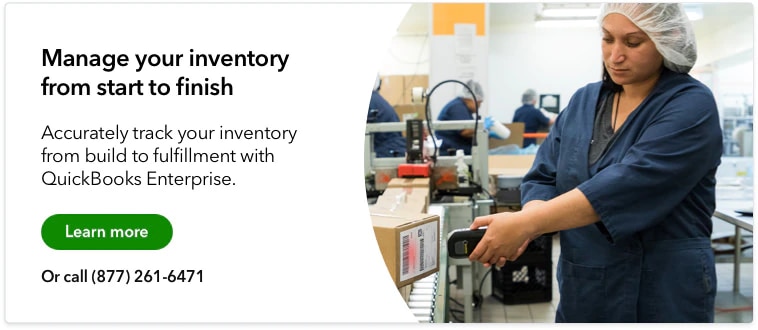Recent years have seen a transformation in supply chains, as companies continue to extend their operations across the globe. With suppliers, manufacturers, and retailers located in multiple regions, a new challenge has emerged to maintain control over the entire supply chain process.
Companies are now looking for ways to manage their end-to-end operations and uphold the standards of their products and services.
One strategy to accomplish this is through supply chain traceability, which is tracking products as they move between locations, from the source to the final customer. Supply chain traceability helps companies access information about every component and process contributing to their products.
This article covers the basics of global supply chain traceability, its key benefits, and the best practices that will improve traceability within your own supply chain.
What is supply chain traceability?
Supply chain traceability is a company’s ability to identify and monitor products as they move from point to point along the supply chain. It creates a detailed map of the product’s entire lifecycle, from suppliers, manufacturers, retailers, and customers.
Unlike supply chain transparency, which offers a broader view of the entire process, supply chain traceability focuses on specific products and product batches. It provides real-time details of a company’s supply chain, including its raw material suppliers, manufacturing and labor practices, and shipment schedules.
By taking inventory of all the materials and movements involved in manufacturing a company’s products, traceability builds a better understanding of the complex interconnections that make up the entire supply chain.
Why is traceability important in today’s supply chains?
Many of today’s supply chains are spread across multiple locations, which presents a distinct challenge for companies.While globalization opens new opportunities to scale and reach wider markets, the dispersed nature creates multiple touch points that require additional management.
Aside from the heightened risk of lost or damaged products given the longer logistical journey, more effort is also required to ensure every party along the supply chain upholds the same high-quality standards.
To accomplish this, supply chain visibility and traceability are increasingly essential priorities to verify operational integrity. For instance, knowing a product’s provenance can significantly reduce the life of any future defects and recalls. The ability to trace supplies and shipments in real time also helps streamline operations and quickly respond to any disruptions or issues that arise.
For some companies, particularly those in the food, beverage, medical, or pharmaceutical sectors, a level of traceability is required to do business. This ensures the efficacy and safety of these highly regulated products before they’re made available to the public.
However, a growing number of customers nowadays prefer companies that maintain transparent operations, regardless of the industry. This includes being more conscious of human rights practices, environmental impacts, and overall ESG (Environmental, Social, and Governance) initiatives.
Supply chain traceability is one way to prove your company’s commitment to ethical and sustainable products. By paying attention to every detail in the supply chain, companies gain clear insight into reducing their emissions and overall carbon footprint. The additional effort of supply chain traceability can ultimately result in greater resilience and competitive advantage in the evolving market.
Benefits of improving traceability in your supply chain
In addition to addressing the changes in modern operations and the demands of today’s market, supply chain traceability offers many other benefits.
Safeguards against low-quality products, loss, and theft
Rather than placing a production order and simply waiting for the shipment to arrive, supply chain traceability sheds light on every step of the supply chain.
As modern operations grow increasingly complex, traceability can be facilitated using barcodes or electronic codes to monitor each product and product component (more on this in the next section). This tracking helps automatically detect the use of any counterfeit or mislabeled parts, in addition to any anomalies in shipment quantities or timelines. Companies are able to track all critical factors, from initial sourcing to final product assembly, and ensure the quality of their production.
Improves operational efficiency and growth
Tracing a product’s journey through the supply chain shows companies where they can reduce disruptions and improve the accuracy of order lead times. These insights contribute to increasing overall efficiency and reliability along the supply chain and, in turn, decrease the likelihood of overstocks or stockouts and the need for rush orders. When implemented correctly, supply chain traceability leads to lower costs, greater profit margins, and a supply chain strategy capable of growth on a global scale.
Ensures compliance with regulations and laws
While regulatory compliance is naturally more stringent for certain industries, such as the U.S. Food and Drug Administration’s (FDA) Food Traceability Final Rule and Current Good Manufacturing Practice (CGMP), manufacturers are generally required to adhere to basic guidelines.
The ISO 9000 is a globally recognized series of standards that provides direction on how manufacturers can maintain quality management systems and products that consistently meet customer expectations.
By bringing together the necessary information about how a product is sourced, produced, and transported, supply chain traceability enables companies to perform due diligence and comply with any regulatory requirements efficiently.
Improves customer experience and loyalty
A primary benefit of supply chain traceability is providing products and services that meet customer expectations. Not only does traceability and transparency help establish more consistency toward fulfilling demand, it also goes a long way in building customer trust.
In cases of product defects or recalls, for example, companies can quickly investigate where along the supply chain the issue occurred and take measures to prevent it from affecting other customer orders.
Transparency has also become a key consideration among customers. They want to know where the product materials were sourced and whether ethical and sustainable practices were used in its production. For this reason, it’s common today for companies to publish details about sourcing and supply chain operations to be more transparent and engage more customers.
Best practices for improving supply chain traceability
Traceability helps companies navigate the ever-expanding supply chain landscape. However, with so many steps and products to keep tabs on, it’s crucial to have a strategic plan. Here are the best practices to consider when implementing a supply chain traceability system.
Adopt a company-wide traceability solution
The first step to successful supply chain traceability is to get the entire company onboarded with the initiative. Determine the desired outcome—improved sustainability, better quality control, or another initiative—and build the appropriate strategy and automated workflows.
Train all stakeholders in the value chain and ensure everyone knows their roles and responsibilities in contributing to traceability. Coordinating with suppliers and other third parties is essential to share relevant details about any new procedures.
Implement a centralized supply chain platform
One of the goals of supply chain traceability is to map every step of the process and bring the data into one platform. Inventory management software makes accessing data easier, contributing to a fuller understanding of potential issues or supply chain optimization opportunities.
With a single source of data, stakeholders have complete visibility into the movements of the products they manufacture.
Utilize digital tracking systems to monitor products
Tracking every component and product using manual methods is virtually impossible. Instead, teams use barcodes or RFID tags to identify and track specific products easily. Once a code or unique identifier is assigned, it’s easy to scan and monitor the flow of products along the supply chain ecosystem.
Modern operations have even started employing blockchain technology to record transactions between supply chain partners to verify end-to-end traceability.
How QuickBooks Enterprise supports supply chain traceability
Whether you have 50 or 5,000 products, QuickBooks Enterprise provides a clear line of sight across your entire supply chain.
QuickBooks Enterprise brings together inputs from varying sources, including the inventory and order management, accounting, procurement, time tracking, and more. Companies can create up to 45 custom fields to add even more granularity to their reporting.
Inventory can further be tracked and traced according to three levels of location tracking (i. e., row, shelf, area, pallet), which allows you to find products quickly, address inaccuracies, and transfer products from one location to another without delay.
Final thoughts
As supply chain management grows in scale and complexity, the number of factors to track can quickly become overwhelming. Supply chain traceability enables companies to trace the path of every product at every point of operations.
When implemented using an inventory management tool like QuickBooks Enterprise, traceability combines all the data needed to align actual production to sales projections and improve sustainability throughout the supply chain.
Prioritizing supply chain traceability enables companies to streamline operations, deliver excellent finished products and customer service, and increase transparency to build a stronger brand.














